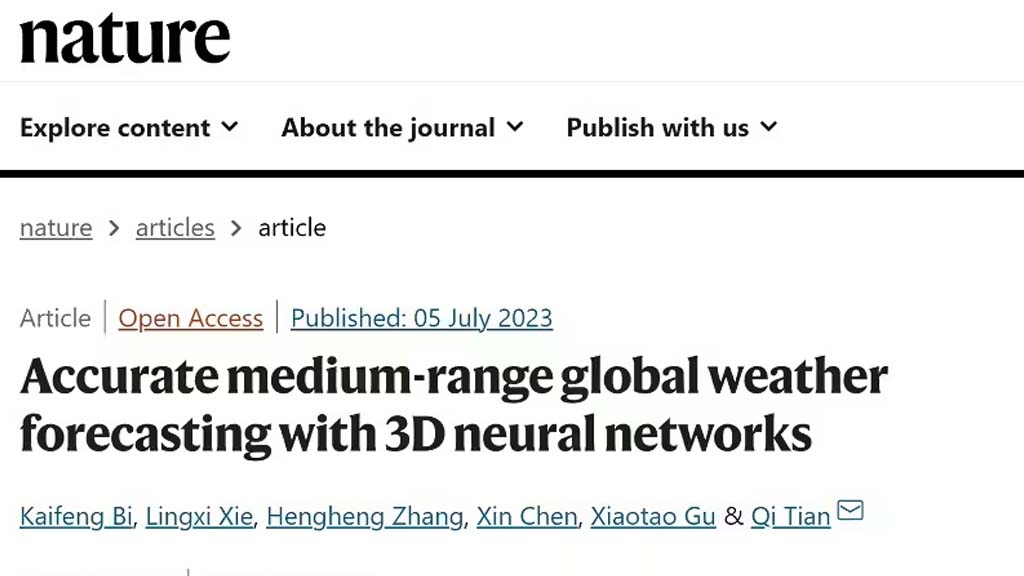News
Nature Journal published paper on Huawei Pangu Weather AI

One of the world’s top scientific journals, Nature has published a paper about the Huawei Cloud Pangu weather AI model.
The paper describes how to develop a precise and accurate global AI weather forecast system based on deep learning using 43 years of data, which appeared in the prestigious journal on July 5, 2023.
Pangu-Weather is an AI prediction model to demonstrate higher precision than traditional numerical weather forecast methods.
The model allows a 10,000x improvement in prediction speed, reducing global weather prediction time to just seconds. The paper, titled “Accurate medium-range global weather forecasting with 3D neural networks” provides independent verifications of these capabilities.
The Pangu Weather model is developed by the Huawei CLOUD team. It is the first AI prediction model with higher precision than traditional numerical prediction methods.

What’s new in Pangu Weather Model?
Huawei said the Pangu Weather model showed higher precision compared to traditional numerical prediction methods for forecasts of 1 hour to 7 days, with a prediction speed gain of 10,000 times. The model can predict in seconds fine-grained meteorological features including humidity, wind speed, temperature, and sea level pressure.
The model uses a 3D Earth-Specific Transformer (3DEST) architecture to process complex non-uniform 3D meteorological data. Using a hierarchical, temporal, aggregation strategy, the model was trained for different forecast intervals using 1-hour, 3-hour, 6-hour, and 24-hour intervals. This resulted in a minimization of the number of iterations for predicting a meteorological condition at a specific time and a reduction in erroneous forecasts.
The researcher trained 100 epochs (cycles) using hourly samples of weather data from 1979-2021 for specific time intervals.
Each of the sub-models that resulted required 16 days of training on 192 V100 graphics cards. Pangu-Weather Model can now complete 24-hour global weather forecasts in just 1.4 seconds on a V100 graphics card. Huawei said it delivers a 10,000-time improvement compared with the traditional numerical prediction.
Dr. Tian Qi, Chief Scientist of HUAWEI CLOUD AI Field, an IEEE Fellow, and an Academician of the International Eurasian Academy of Sciences comes into the position of explaining the motive behind this model.
“Weather forecasting is one of the most important scenarios in the field of scientific computing because meteorological prediction is a very complex system, yet it is difficult to cover all aspects of mathematical and physical knowledge. We are therefore delighted that our research has been recognized by the Nature magazine. AI models can mine statistical laws of atmospheric evolution from massive data. At present, Pangu-Weather mainly completes the work of the forecast system, and its main ability is to predict the evolution of atmospheric states. Our ultimate goal is to build a next-generation weather forecasting framework using AI technologies to strengthen the existing forecasting systems.” said Tian Qi.
(source)






